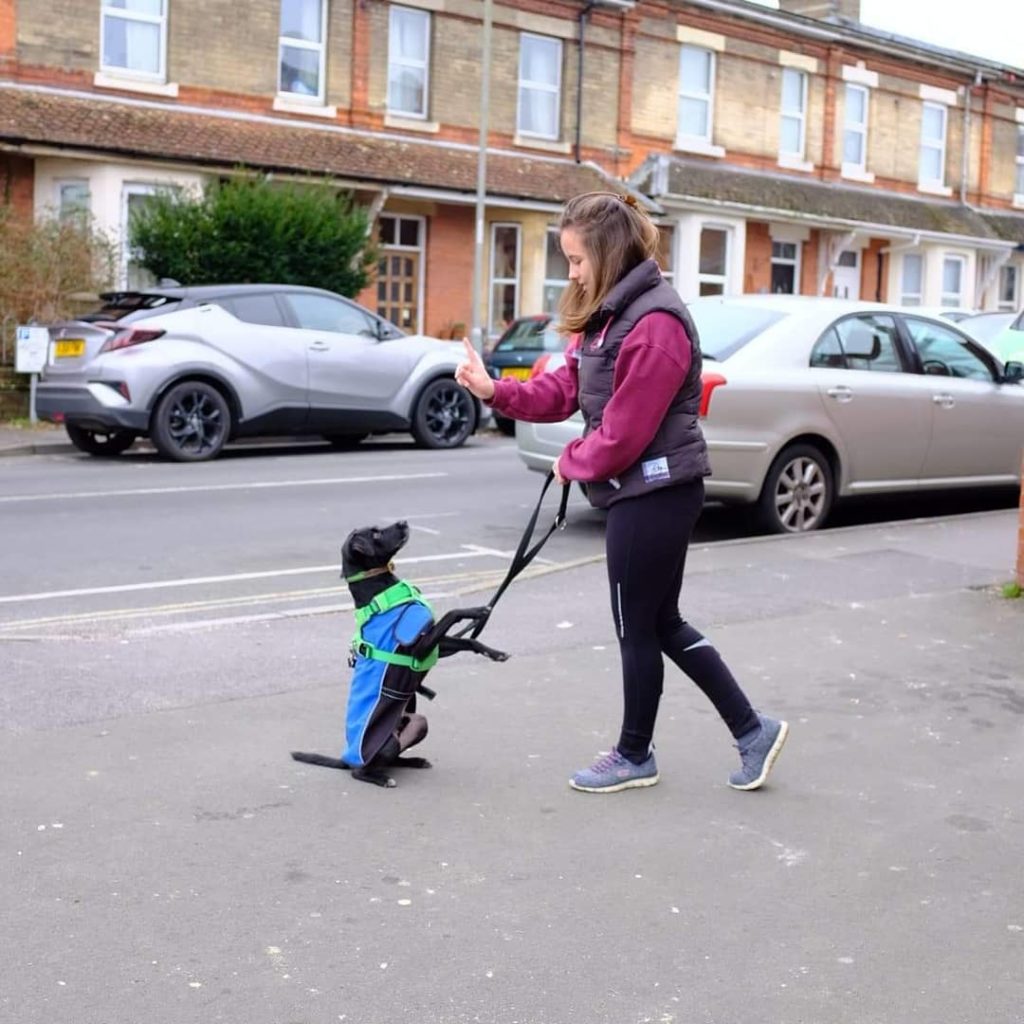In keeping with last week’s blog post about how to fit more training into a busy schedule, I thought I’d attempt to write about the Premack Principle. This principle was the work of David Premack, who originally used it to work with great apes. I personally found this concept very difficult to get my head around so my attempt to break it down may seem overly simple but I want to try and explain the concept and its uses without confusing anyone.

The Premack Principle states that a high probability behaviour will reinforce a low probability behaviour. Before we go any further, it is important to note that ‘reinforce’ in a scientific context is a reward for the receiving organism that makes the behaviour they received it for more likely to occur. A reinforcement is different from a reward. A reward is something you receive for a behaviour that you like, but it doesn’t necessarily make the behaviour you performed more likely to occur. A reinforcement is something that you receive for a behaviour that you like enough to make you carry out the behaviour you performed more frequently. All reinforcements are rewards but not all rewards are reinforcements. Therefore, to put the definition simply, a preferred behaviour (for the dog) will increase the frequency of a less-favoured behaviour (for the dog) occurring.
The Premack Principle is often referred to as ‘Grandma’s Rule’ as they often say, ‘You must eat your vegetables before you can go and play or have your ice cream.’ Any parents reading this might be realising how often they’ve used this principle without knowing it. The applications for people are wide ranging and varied, it’s a fantastic principle to keep in mind when trying to improve your own behaviour. ‘I must exercise then I can eat my cake’ is a favourite of mine!
Enough of the science and the human applications, time to get to how this can be used to train your loving canine companion. You’ll often hear trainers say how reinforcements are not just food based. The perfect reinforcement for a behaviour depends on the situation in which the behaviour occurred and the personality of the animal you’re working with. For example, a dog that loves to play with other dogs and plays appropriately with them may recall away from a group of canine friends on a walk. The best reinforcement for such a behaviour is likely going to be to go straight back to those dog friends and play with them again. However, a terrier that recalls off a chasing bird, can’t really be sent to go and chase them further so an owner that’s pulling a tug toy and running away is likely to be far more rewarding and appropriate for the situation.

On a more intrinsic day to day level you can pick a behaviour that you want to perfect, be it a ‘Watch’, a ‘Sit’, a ‘Down’, or a heelwork position, you can ask for that behaviour before you give the dog anything they want throughout the day. For example, before placing the dog’s meals down ask for the behaviour and then present the food. Before leaving the house and opening the front door, ask for the behaviour you want to work on at the moment. Before letting the dog off the lead to go for a walk or to go and sniff ask for the behaviour. This is a brilliant way to work on a behaviour at every opportunity your dog wants something from you throughout the day without even scheduling in a session to work on it. Efficient use of the Premack Principle can change the way you train on a daily basis and help you identify the most efficient reinforcement for a behaviour that will make your dog think that every day is Christmas!
Has Premack Principle changed how you train? Tell me in the comments!

Excellent , easy to understand explanation of what is sometimes a very difficult principle to explain. From one trainer to another…Thanks!
Thanks Neil! Glad you liked it, hopefully it will help you and your clients in the future!
Wow that was so helpful, thanks Ema… has really provided me with a much more practical insight into that this is all about! I suspect, until now, that I was largely missing the point.
Glad you liked it Vicky!